
Rivista Italiana delle Sostanze Grasse
Scope & Guideline
Connecting Researchers in the World of Organic Chemistry
Introduction
Aims and Scopes
- Olive Oil Quality and Processing:
The journal emphasizes studies on olive oil, including its extraction methods, quality assessment, and the impact of processing techniques on its properties. This includes research on factors affecting the quality of olive oil, such as geographical origin and cultivation practices. - Chemical Composition and Biological Activities:
Research on the chemical constituents of various oils, including essential oils, is a core focus. This includes studies on the bioactive compounds in oils and their potential health benefits, toxicity assessments, and antioxidant properties. - Innovative Analytical Techniques:
The journal features advancements in analytical methodologies for oil testing, including chromatographic techniques and chemometric analyses. These studies aim to improve the accuracy of oil quality assessments and ensure authenticity. - Sustainability and Environmental Impact:
Research addressing sustainable practices in oil production and processing, as well as the environmental aspects of oil and fat usage, is highlighted. This includes studies on organic farming practices and the impact of climate change on oil crops. - Nutritional Aspects of Oils and Fats:
The journal covers research related to the nutritional profiles of various oils, including their fatty acid compositions and health implications. This includes studies on the replacement of fats in food products and the health benefits of incorporating certain oils into diets.
Trending and Emerging
- Impact of Processing Technologies:
Recent studies increasingly focus on the effects of innovative processing technologies on oil quality, including the use of microwaves and other novel methods that enhance the extraction and preservation of bioactive compounds. - Health and Safety Assessments:
There is a growing interest in the safety and efficacy of oils, particularly in relation to their chemical composition and potential health impacts, including studies on cytotoxicity and allergenic responses. - Sustainable Practices in Oil Production:
Research emphasizing sustainability, including organic farming practices and the environmental impact of oil production, is gaining traction as the industry seeks to address ecological concerns. - Diversity of Oil Sources:
Emerging studies are exploring a wider variety of oil sources beyond traditional ones, such as essential oils from various plant species, reflecting a trend towards discovering new applications and benefits of less common oils. - Interdisciplinary Approaches:
There is a notable trend towards interdisciplinary research that combines elements of food science, agronomy, and biochemistry to provide a more comprehensive understanding of oils and their applications.
Declining or Waning
- Traditional Extraction Methods:
Research on traditional or historical methods of oil extraction has seen a decrease, as more emphasis is placed on innovative and efficient extraction technologies that enhance oil quality and yield. - General Agricultural Practices:
Studies focusing solely on broad agricultural practices without a direct connection to oil quality or composition are becoming less common. The journal is leaning towards more specialized research that ties agricultural techniques to specific outcomes in oil production. - Basic Nutritional Studies:
There is a noticeable reduction in basic nutritional studies of oils that do not explore advanced biochemical analyses or health impacts, as the field moves towards more complex and multifaceted approaches.
Similar Journals

Food Analytical Methods
Empowering researchers to enhance food safety standards.Food Analytical Methods, published by Springer, is an esteemed journal dedicated to the innovative field of analytical methodologies within the food sciences. With an ISSN of 1936-9751 and E-ISSN of 1936-976X, this journal serves as a pivotal platform for researchers and professionals to exchange insights, methodologies, and findings related to food quality analysis, safety measures, and innovative technologies in food science. As of 2023, Food Analytical Methods boasts impressive Scopus rankings, including Q2 in Analytical Chemistry and Food Science, positioning it among the top journals in its category. The journal's commitment to enhancing food safety and quality through rigorous research underscores its importance in both academic and industrial applications. Although it does not currently operate under an open-access model, it provides exceptional value through its rigorous peer-review process and comprehensive publication standards, further inviting contributions from both established and emerging scientists in the field. With coverage spanning from 2008 to 2024, this journal continues to address critical research areas, thereby shaping the future of food analytics.

Journal of Essential Oil Bearing Plants
Transforming Chemistry through Essential OilsJournal of Essential Oil Bearing Plants, published by Taylor & Francis Ltd, is a peer-reviewed academic journal that plays a critical role in the field of essential oils and their applications in analytical chemistry, biochemistry, and organic chemistry. With an ISSN of 0972-060X and an E-ISSN of 0976-5026, this journal has been a valuable resource since its inception in 2003 and continues to publish cutting-edge research through 2024. The journal is classified in the Q2 category for Analytical Chemistry and Q3 for both Biochemistry and Organic Chemistry as of 2023, reflecting its high citation impact and relevance in these scientific domains. Researchers and practitioners will find a wealth of knowledge in its pages, showcasing innovative methodologies and findings that advance our understanding of essential oils and their diverse applications. While the journal does not currently offer Open Access options, its rigorous peer-review process ensures that published studies maintain the highest standards of scientific integrity. Located in the United Kingdom, the Journal of Essential Oil Bearing Plants is dedicated to disseminating essential research findings to a global audience, thereby facilitating ongoing dialogue and development in this important field.
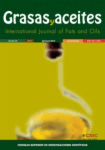
GRASAS Y ACEITES
Exploring the science behind food's essential elements.GRASAS Y ACEITES, published by the Consejo Superior Investigaciones Científicas (CSIC)Food Science and Organic Chemistry since 1991. Based in Madrid, Spain, this journal facilitates the dissemination of innovative research and cutting-edge discoveries pertaining to fats and oils, addressing both their nutritional properties and functional applications. The journal holds a commendable position within the academic community, ranking in the third quartile in both its categories as of 2023, and features a dedicated platform for dialogue among researchers, professionals, and students. By providing unhindered access to its publications, GRASAS Y ACEITES fosters a collaborative environment for advancing knowledge and understanding in its respective fields, making it an essential resource for those invested in food science and organic chemical research.
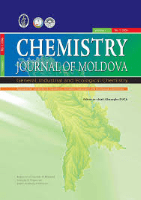
Chemistry Journal of Moldova
Empowering Researchers: Share, Discover, and Innovate in ChemistryChemistry Journal of Moldova is a pioneering open-access journal dedicated to fostering the dissemination of significant research in the diverse fields of chemistry, including Environmental Chemistry, Process Chemistry and Technology, and more. Published by the esteemed Academia Sciences Moldova, Institute of Chemistry, this journal has been at the forefront of scientific inquiry since its establishment in 2006. With an ISSN of 1857-1727 and a digital presence through its E-ISSN of 2345-1688, it provides an accessible platform for researchers, students, and professionals to share and engage with cutting-edge findings. Although currently ranked in the Q4 quartile in several chemistry categories, the journal is committed to improving its impact within the academic community and aims to highlight emerging trends and technologies in the chemistry domain. The journal's office is located at 3 Academiei Str, Chisinau MD-2028, Moldova. As it converges its publication years from 2016 to 2024, the Chemistry Journal of Moldova invites all contributors and readers to explore its rich repository of research that bridges innovative ideas to practical applications.
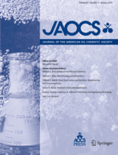
JOURNAL OF THE AMERICAN OIL CHEMISTS SOCIETY
Shaping the Future of Oil Chemistry ResearchJOURNAL OF THE AMERICAN OIL CHEMISTS SOCIETY, published by WILEY, is a premier academic journal that has been at the forefront of research in the fields of chemical engineering and organic chemistry since its inception in 1947. With an ISSN of 0003-021X and an E-ISSN of 1558-9331, this journal serves as an invaluable resource for researchers and professionals interested in the latest advancements and methodologies in oil chemistry and related disciplines. The journal holds impressive rankings, placing in the Q2 category for Chemical Engineering and Q3 for Organic Chemistry, reflecting its influential position in the academic community as evidenced by its Scopus rankings. While it follows a subscription model, the journal remains committed to disseminating quality research, aiming to enhance understanding and application within the chemical science sector. Researchers, professionals, and students engaged in oil chemistry and engineering will find JOURNAL OF THE AMERICAN OIL CHEMISTS SOCIETY crucial for staying abreast of developments that shape this dynamic field, as it continues to publish cutting-edge research through to 2024 and beyond.
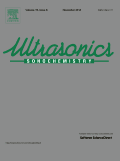
ULTRASONICS SONOCHEMISTRY
Exploring the Synergy of Sound and Chemistry for a Sustainable Future.ULTRASONICS SONOCHEMISTRY, published by ELSEVIER, is a pioneering Open Access journal that has been at the forefront of research in the fields of acoustics, ultrasonics, and their applications in chemical engineering, environmental science, and radiology since its inception in 1994. With an impressive Impact Factor and ranking amongst the top quartile journals across multiple disciplines such as Organic Chemistry, Inorganic Chemistry, and Environmental Chemistry, it serves as an essential platform for researchers and professionals seeking to disseminate their work and advance knowledge in sonochemistry and related areas. The journal's commitment to accessibility since 2021 ensures that high-quality research is openly available, thus fostering collaboration and innovation within the scientific community. As it converges into 2024, ULTRASONICS SONOCHEMISTRY continues to uphold its reputation for excellence and encourages the submission of groundbreaking studies that explore the synergistic effects of ultrasound in chemical processes.
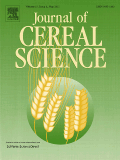
Journal of Cereal Science
Innovating food science with every publication.The Journal of Cereal Science, published by ACADEMIC PRESS LTD- ELSEVIER SCIENCE LTD, stands as a pivotal platform for the dissemination of high-quality research in the fields of biochemistry and food science, maintaining an impressive impact factor that reflects its influential position in academia. With a Q1 ranking in Food Science and a Q2 in Biochemistry as of 2023, the journal is recognized for its rigorous peer-review process and its commitment to advancing the understanding of cereal grains and their applications. Since its inception in 1983, the journal has provided comprehensive insights into areas such as grain genetics, processing technology, and nutritional aspects of cereals, catering to an audience of researchers, professionals, and students alike. The scope encompasses a diverse range of topics, ensuring a broad interdisciplinary appeal. Published through the prestigious Elsevier platform, it fosters global collaboration and knowledge sharing, thereby playing a crucial role in shaping the future of cereal science.

Acta Scientiarum Polonorum-Technologia Alimentaria
Showcasing Excellence in Food Technology InnovationsActa Scientiarum Polonorum-Technologia Alimentaria, published by Poznan University of Life Sciences, is a revered journal in the field of food science, showcasing cutting-edge research and innovations in food technology. Established as a leading platform within its domain, this journal is indexed under Scopus and ranks in the 2023 Q3 quartile for Food Science, demonstrating its commitment to high-quality scholarship. With an ISSN of 1644-0730 and E-ISSN 1898-9594, it serves as a critical resource for researchers, professionals, and students seeking to stay at the forefront of advancements in food safety, quality control, and sustainable practices. The journal has also been recognized for its contributions to the agricultural and biological sciences, positioning itself at rank #205 out of 389 in this competitive field. While currently not offering open access, the journal's valuable insights and findings, especially as it publishes through 2024, play a crucial role in advancing knowledge and fostering collaboration among experts in the food science sector.
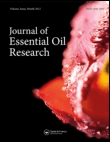
JOURNAL OF ESSENTIAL OIL RESEARCH
Pioneering Research in Aromatic ChemistryThe Journal of Essential Oil Research, published by Taylor & Francis Inc, is a premier academic journal dedicated to the field of essential oils, encompassing their chemistry, applications, and therapeutic benefits. With an ISSN of 1041-2905 and an E-ISSN of 2163-8152, this journal has become a vital resource for researchers and professionals seeking to advance their knowledge in this niche yet significant area of study. Spanning from 1989 to 2024, the journal maintains a strong reputation, currently positioned in the Q2 quartile for Chemistry (miscellaneous) and achieving a Scopus rank of #116 out of 408, placing it within the 71st percentile of its category. Although not an open-access journal, it provides rigorous peer-reviewed articles that contribute valuable insights into the rapidly evolving field of essential oils. Its objectives include advancing scientific understanding and application of essential oils in various sectors, including food, health, and cosmetics, making it a crucial platform for scholars, researchers, and practitioners alike.

OCL-Oilseeds and Fats Crops and Lipids
Championing Open Access to Cutting-edge ResearchOCL-Oilseeds and Fats Crops and Lipids is a renowned open-access journal published by EDP Sciences S A, specializing in the fields of agronomy, food science, and biochemistry. Since its inception in 2000, this journal has vigorously contributed to the advancement of research surrounding oilseeds and fats, addressing critical issues related to crop production, lipid analysis, and sustainable practices in food science. With an impressive impact factor reflected in its 2023 rankings—Q2 in Agronomy and Crop Science, Q3 in Biochemistry, and Q2 in Food Science—OCL stands out for its rigorous peer-review process and commitment to disseminating high-quality research. Its Scopus rankings further establish its reputation within the scientific community, occupying the 73rd and 64th percentiles in Agronomy and Food Science, respectively. This makes it an essential platform for researchers, professionals, and students focused on enhancing the understanding and application of lipid science and oilseed cultivation. Located in France, OCL encourages a global dialogue on innovations and discoveries that can drive the future of agricultural production and food technology.